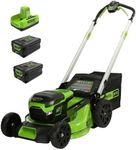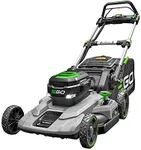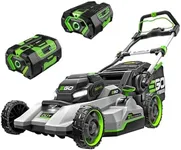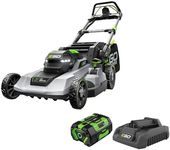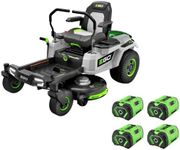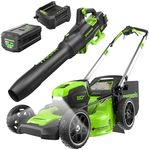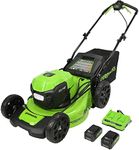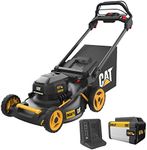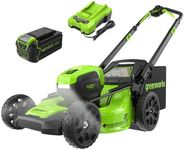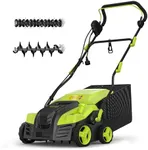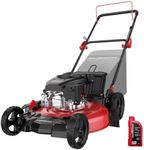Buying Guide for the Best Self Propelled Lawn Mower
Choosing the right self-propelled lawn mower can make maintaining your lawn much easier and more efficient. Self-propelled lawn mowers are designed to move forward on their own, requiring less effort from you. When selecting a self-propelled lawn mower, it's important to consider several key specifications to ensure you get the best fit for your needs. Understanding these specs will help you make an informed decision and find a mower that suits your lawn size, terrain, and personal preferences.Engine PowerEngine power, measured in horsepower (HP) or cubic centimeters (cc), determines how efficiently the mower can cut through grass. Higher engine power is important for larger lawns or tougher grass. For small to medium-sized lawns with regular grass, an engine with lower power (around 140-160cc) should suffice. For larger lawns or thicker grass, consider a more powerful engine (above 160cc). Your lawn size and grass type will guide you in choosing the right engine power.
Cutting WidthCutting width refers to the width of the mower's cutting deck and determines how much grass is cut in a single pass. A wider cutting width (20-22 inches) is ideal for larger lawns as it reduces the number of passes needed, saving time. For smaller lawns or areas with tight spaces, a narrower cutting width (16-18 inches) offers better maneuverability. Consider the size of your lawn and any obstacles when choosing the cutting width.
Drive TypeSelf-propelled lawn mowers come with different drive types: front-wheel drive (FWD), rear-wheel drive (RWD), and all-wheel drive (AWD). FWD mowers are easier to maneuver and work well on flat terrain. RWD mowers provide better traction on slopes and uneven ground. AWD mowers offer the best traction and are suitable for hilly or very uneven terrain. Choose the drive type based on your lawn's terrain to ensure ease of use and efficiency.
Speed ControlSpeed control allows you to adjust the mower's speed to match your walking pace and the mowing conditions. Variable speed control offers more flexibility and comfort, especially for larger lawns or varying grass conditions. Fixed speed mowers are simpler and may be sufficient for smaller, uniform lawns. Consider your comfort and the size of your lawn when deciding on speed control options.
Cutting Height AdjustmentCutting height adjustment lets you change the height at which the grass is cut. This is important for maintaining a healthy lawn, as different grass types and seasons require different cutting heights. Look for mowers with easy-to-use height adjustment mechanisms and a range of height settings. If you have a variety of grass types or want to adjust the height frequently, a mower with multiple height settings will be beneficial.
Grass Clipping ManagementGrass clipping management refers to how the mower handles the grass clippings. Options include bagging, mulching, and side discharge. Bagging collects clippings for disposal, keeping the lawn tidy. Mulching finely chops clippings and returns them to the lawn as natural fertilizer. Side discharge expels clippings to the side, which can be useful for less frequent mowing. Choose a mower with the clipping management option that best suits your lawn care routine and preferences.
Weight and ManeuverabilityThe weight of the mower affects how easy it is to maneuver, especially around obstacles and on slopes. Lighter mowers are easier to handle but may be less durable. Heavier mowers offer more stability and durability but can be harder to maneuver. Consider your physical strength and the layout of your lawn when choosing the weight and maneuverability of the mower.
Noise LevelNoise level is an important consideration, especially if you live in a neighborhood with noise restrictions or prefer a quieter mowing experience. Electric mowers tend to be quieter than gas-powered ones. If noise is a concern, look for mowers with lower decibel ratings. Consider your tolerance for noise and any local regulations when selecting a mower based on noise level.
